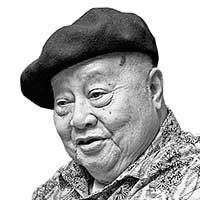Beginnings and alternative endings

We turn this week from high and ghastly matters that is politics to high and ghostly matters that is literature. If we are not writers, we can very well be readers; we need literature from which we learn ethics. With literature, too, we will understand ourselves better so we can live with ourselves.
How does a story, a novel, begin and when should it end? These are crucial problems for writers. Readers want beginnings that will grip them and endings that are neat, conclusive, and satisfying.
As a teenager starting to write stories, I was very fascinated with so-called O’Henry endings. Having read such classics like “The Gift of the Magi” and Maupassant’s “The Necklace,” I tried to plot out stories with similar surprise endings. All of them were rejected by the pre-war Free Press, The Sunday Tribune Magazine, and The Graphic. Plotting them required so much mental effort I eventually had to stop writ-ing that kind of fiction and ended my stories where they should logically end.
I also had considered Hemingway’s advice never to empty the well, and so the endings of my novels and short stories were sometimes inconclusive. I wanted my readers, given all the data, to make their own conclusions. This is the way my novel, Ermita, ends.
A good read starts with tension. In detective or spy novels, the reader reads on because he wants to know how the crime is solved or how the mission is fulfilled, and how the detective or spy triumphs. This can be reversed. The end becomes the beginning and the tension lies in answering the question why. Tony Samson is dead in the beginning of The Pretenders, and why he killed himself is the story.
Sometimes I leave reality to venture into the realm of fantasy; fiction anyway is imagination and therefore unreal in the sense that although the events and characters may look like life creations, they are not. I see to it, as does every careful writer, that these so-called fantastic events are believable enough to fit into the logic of narrative.
My last two novels, Sherds and The Feet of Juan Bacnang, are examples of fantasies woven into the narrative. In writing these novels, I must admit that in Sherds, I was influenced very much by that old Greek myth, Pygmalion. In The Feet of Juan Bacnang, however, it was Oscar Wilde’s The Picture of Dorian Grey and Albert Camus’s The Plague that influenced me.
As a writer I am not satisfied with the endings of some of the famous works of fiction.
If I had my way, I would change the endings of several stories and novels that have gained world popularity.
Rizal’s novels, for instance, are required reading in our schools. I do not like the way he ended his second novel, El Filibusterismo, which is a sequel to his first, Noli Me Tangere. The novel is an exposition of Spanish abuses in the last days of the Spanish regime in the country. To hasten the revolution, conspirators brought a bomb to a house, to be exploded at a meeting of the country’s elite. The bomb is thrown into the sea instead. I would have had the bomb go off and then reap the conclusion as the fitting end of the novel and the beginning of a new one.
The ending of Don Quixote dela Mancha is undramatic. The sick, old man is dying and he apologizes to his squire, Sancho Panza, for having led him astray with his fantasies. And so he dies and the story dies with him. I would have ended it differently. I would have Don Quixote go to Cadiz, the seaport in Andalucia, where those tiny ships sailed to the New World. Sancho Panza remembers taking him to the quay and it is there where the old knight disappears. Then the story could continue from there – Don Quixote goes to the New World perhaps, where he continues his crusade for righteousness.
And now, The Book of Job in the Old Testament. In this book, God punishes Job and makes his life miserable. Job loses so many of the things that he had earned through hard work, and all his sons and daugh-ters, all these to test his faith. In the end, when God was satisfied with Job’s loyalty, He gives back all that Job had lost. In my version of the ending, Job loses everything and suffers immeasurably, yet he en-dures and does not lose his faith. With this ending, Job’s story becomes more heroic, more telling in its message and faith.
Fairy tales usually end with “and they lived happily ever after.” This is what we expect and want, endings where all the loose ends are tied together. But this is not what happens in real life, where endings are never really certain unless a person commits suicide.
Would the world be happier, better, and society more compassionate if from the very beginning of our existence we are guided by the knowledge that we won’t bring anything to the grave? When Alexander the Great died, his hands were both exposed to show that he was leaving the world as he had entered it, empty-handed.
And this world itself, how will it end? “Not with a bang but a whimper?”
All through the grim Marcos years, I wished I would live to see how the dictatorship would end. I did see that the end was coming when I witnessed the millions that followed the coffin of Ninoy to the ceme-tery. My expectations became more pronounced with the massive demonstrations against Marcos. Then EDSA I – it was a complete surprise. I recall that late afternoon when news reached us at EDSA that Mar-cos had fled. Such joy swept through the crowd. Many wept and strangers embraced one another – a celebration that will never be repeated.
And what about the Duterte regime? How will this story end?
- Latest
- Trending






















